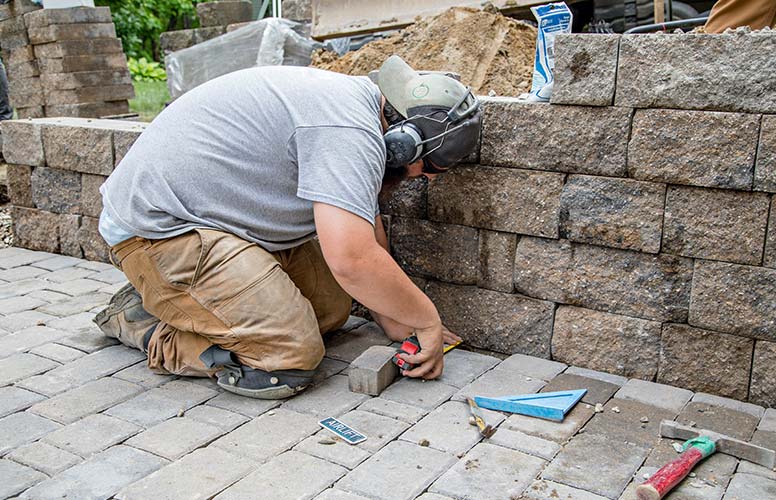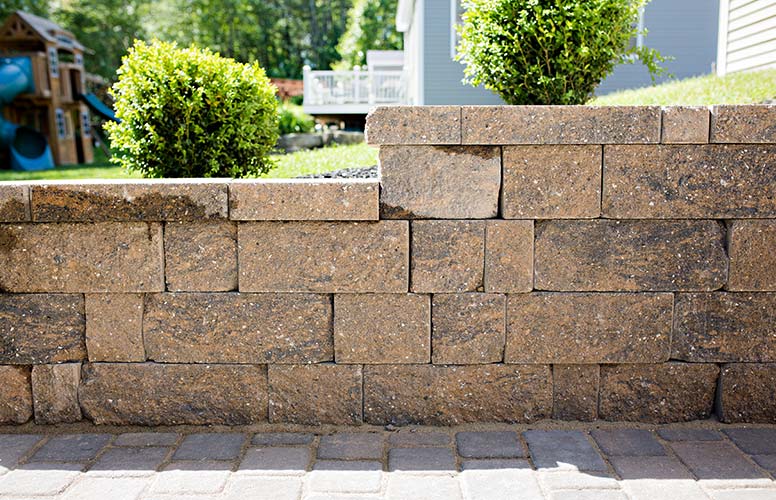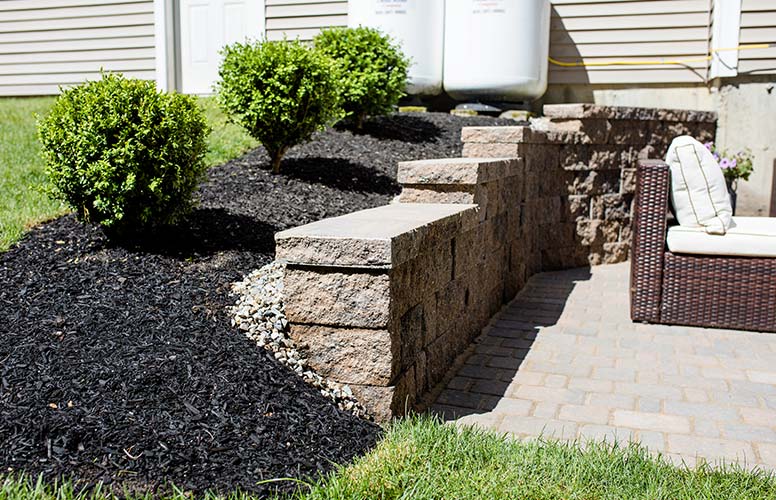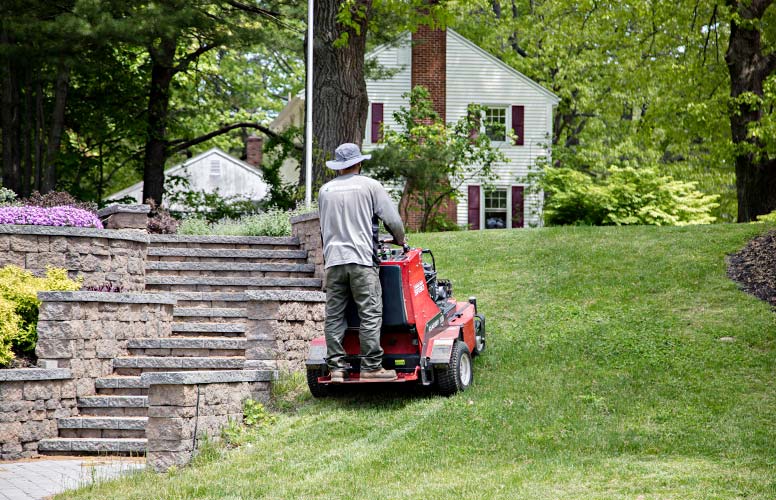All You Need to Know About Hydroseeding: Benefits, Cost & When to Use It
Hydroseeding is a popular and cost-effective technique used in growing exquisite lawns, gardens, and landscapes. By combining grass seed, fertilizer, ...
If you’re planning a major landscaping project, knowing the different types of retaining walls is essential.
From gravity and cantilever to sheet piles and reinforced soil, every kind of wall can provide unique benefits depending on your Maine property and project. Ultimately, the right wall for your situation will depend on the cost, materials used, and the surrounding environment.
In this post, we’ll look at four different retaining walls — gravity retaining walls, cantilever retaining walls, sheet pile retaining walls, and “reinforced soil” or “geosynthetic reinforced” wall systems — so you can determine which one is best suited for your needs.
Retaining walls are a critical part of patio, garden, and other landscaping projects around your property. They hold soil and rock firmly in place to prevent erosion, flooding, and landslides.

These walls also create terraced landscapes and expand usable outdoor space. Made of various materials — such as concrete blocks, stone, brick, or wood, the retaining wall’s design depends on the site, purpose, and aesthetic preference.
However, the basic principle of the retaining wall always remains the same: to provide stability and support to steep slopes.
Retaining walls not only add functional value but also enhance the visual appeal of any property. A well-designed and constructed retaining wall can last for decades and withstand environmental pressures.

Gravity retaining walls are structures designed to hold soil in place by utilizing their weight and the force of gravity. Unlike other types of retaining walls, such as cantilever or anchored walls, gravity walls do not require additional support. They’re typically made of concrete or stone and can vary in height and width depending on the project’s needs.
One of the main advantages of gravity retaining walls is their strength and durability, which makes them ideal for use in infrastructure projects such as roads, bridges, and highways. They’re also commonly used in landscaping projects to create raised garden beds or to prevent erosion on steep slopes.
Overall, if you’re looking for a sturdy and reliable solution for retaining soil, a gravity retaining wall could be the perfect fit for your project.

Cantilever retaining walls are a popular choice for retaining soil, particularly when the soil needs to be retained over a significant height.
These walls are designed in a way that allows the weight of the soil to be distributed evenly throughout the wall, which reduces the chances of it collapsing. They can be made from various materials, including concrete and reinforced masonry, and can be used in a variety of settings — from residential gardens to large-scale highway construction projects.
One of the most significant advantages of cantilever retaining walls is their cost-effectiveness, making them a popular choice for many construction projects. However, they’re only suitable for specific soil types and may not be the best option in every situation. Overall, cantilever retaining walls provide an excellent solution for stabilizing soil and preventing erosion when designed and implemented appropriately.
Sheet pile retaining walls are a type of retaining wall that’s designed to provide lateral support to soil or other materials.
These walls are constructed using sheets of interlocking steel that are driven deep into the ground to form a horizontal barrier. They’re typically used to retain soil and prevent erosion in areas where space is limited. Some common uses for sheet pile retaining walls include shoreline protection, excavations, and structural support.
These walls are particularly useful in soft or loose soil conditions, as they provide a stable and reliable solution for retaining vertical or sloping earth. Whether you’re building a new structure or simply looking to improve the stability and safety of your property, consider using sheet pile retaining walls as an effective and cost-efficient solution.

If you’re looking for a reliable, cost-effective solution to prevent soil erosion or retain vertical slopes, then reinforced soil retaining walls might be exactly what you need. These structures consist of a reinforced soil mass held in place by a facing system that can take various forms, such as concrete panels or geotextile sheets, to provide stability and durability.
The facing system transfers lateral loads from the soil to the reinforcement, which creates a stiffened soil-block structure capable of withstanding external forces, such as wind, water, or traffic. Furthermore, reinforced soil retaining walls are versatile and can accommodate a wide range of application scenarios, from road and rail embankments to landscaping and waterfront stabilization.
So, if you’re dealing with challenging terrain or complex soil conditions, reinforced soil retaining walls can be an effective alternative to traditional concrete or masonry walls.
Retaining walls are an essential component of any landscape project. Each type of wall has unique advantages and disadvantages, so it’s necessary to consider the specifics of your project to determine which type of wall best meets your needs.
Gravity retaining walls are great for small and medium-sized projects, cantilever retaining walls are one of the most popular types due to their flexibility and strength, sheet pile retaining walls can be used when there is a need for more stability along a shoreline or lake wall, and reinforced soil retaining walls are very effective for larger projects that require greater resilience against lateral pressure. Regardless of the size or scope of your project, Greencare Landscape Management is here to provide expert advice on how best to approach your retaining wall needs. Contact us today for a free estimate!